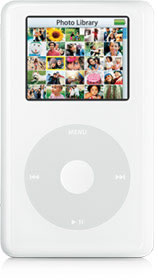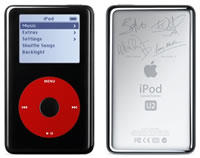Video Networks Ltd. (VNL) is upping their game with their HomeChoice service. It has announced the addition of a home phone service to its already rather ample HomeChoice bundle of broadband Internet, digital TV and video-on-demand, making it a serious contender for both home entertainment and communications. The service will be delivered using Carrier Pre-Selection, and VNL also plans to offer line rental in 2005. Carrier Pre-Selection entails them using BT lines to carry the phone traffic to VNL networks for delivery.
Currently the service isn’t using VoIP, but we understand from them that they may move to this in the New Year. They certainly have the equipment and bandwidth available to provide it.
HomeChoice customers can opt for either ‘Free Evening and Weekend’ calls at no additional cost, or have the option to upgrade to the ‘Anytime’ talk plan from £5 (~$9) per month. Both offering lower rates to UK mobiles and overseas numbers than similar plans from BT, TalkTalk, One.Tel, NTL and Telewest.
The ‘Free Evenings and Weekends’ talk plan offers, the obvious, free evening and weekend calls to all local and national numbers starting with 01 & 02, and a daytime rate of 2.5p to those numbers.
‘Anytime’ talk plan includes calls to all local and national numbers starting 01 & 02. It costs £9 (~$16) per month for 512Kb broadband customers, £7 (~$12) per month for 1Mb broadband customers, and £5 (~$9) per month for 2Mb broadband customers.
You don’t need a special box or a prefix code. You can use your existing phone and phone number, and the existing standard BT line in your house, for which you will still pay rental. But you have to take VNL’s broadband and digital TV services to avail of the free calls.
The first to offer four services in the UK, VNL geared itself up for this expansion earlier in the year by appointing Vijay Sodiwala, former managing director at Broadsystem Ventures, a News Corporation company, to develop the home phone services.
The service faces stiff competition from rival fixed line offerings such as Carphone Warehouse’s TalkTalk brand, One.Tel, BT, NTL and Telewest, but no doubt the £1 million (~$1,841,100) marketing push will give it a kick start, and hopefully (pardon the pun) ringing endorsements.
 Apple’s much anticipated and predicted new iPod – iPod Photo, launched late yesterday, has moved into the multimedia realm, allowing users to view and share photos as well as the normal music play back. The new iPod Photo can hold up to 25,000 pictures and can be connected to a television to play video slide shows. The 40-gigabyte version is priced at $499 (~£272) and the 60-gigabyte model is priced at $599 (~£326).
Apple’s much anticipated and predicted new iPod – iPod Photo, launched late yesterday, has moved into the multimedia realm, allowing users to view and share photos as well as the normal music play back. The new iPod Photo can hold up to 25,000 pictures and can be connected to a television to play video slide shows. The 40-gigabyte version is priced at $499 (~£272) and the 60-gigabyte model is priced at $599 (~£326). The U2 iPod is expected to be available mid-November for a suggested retail price of £249 (~$456) through the Apple Store, Apple’s retail stores and Apple Authorised Resellers. IPod TV adverts showing U2 were shown on UK television this evening.
The U2 iPod is expected to be available mid-November for a suggested retail price of £249 (~$456) through the Apple Store, Apple’s retail stores and Apple Authorised Resellers. IPod TV adverts showing U2 were shown on UK television this evening.